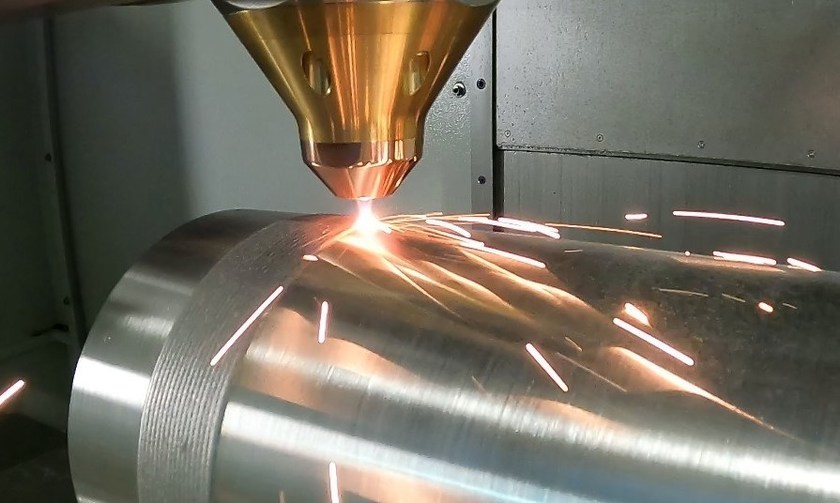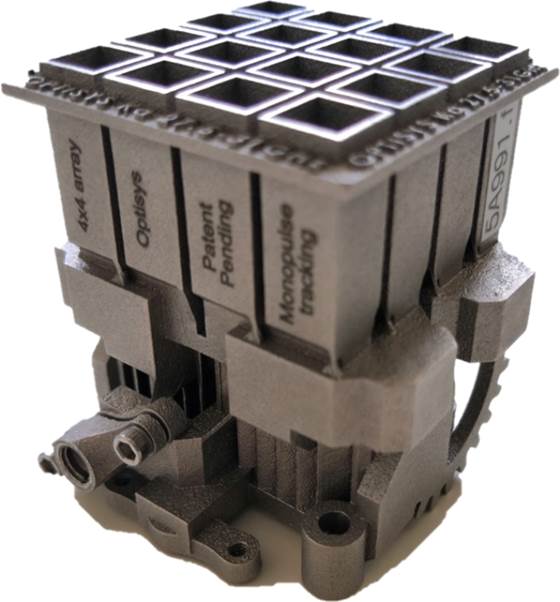Japanese optics and imaging multinational Nikon has accelerated its recent 3D printing expansion by investing in two more additive manufacturing companies.
Hot on the heels of Nikon’s SLM Solutions takeover bid, it has now invested in Optisys and Hybrid Manufacturing Technologies (HMT), developers of hybrid 3D printers and additive manufactured antennas respectively.
Yuichi Shibazaki, VP and GM of Nikon’s Next Generation Project Division, says that moving forwards, Nikon aims to harness synergies between its portfolio and those of its new 3D printing partners. In doing so, Shibazaki believes it could be possible to boost the application of both firms’ offerings, while working towards the goals of Nikon’s digital manufacturing-driven Vision 2030 program.
“As an industry leader with demonstrated collaborative capabilities, HMT and its AMBIT portfolio are well-matched with Nikon technologies,” explained Shibazaki. “We look forward to working with them as part of our commitment to creating value and advancing society through novel industries like hybrid manufacturing.”
“This investment in HMT is the latest component of our Next Generation Project program to further industrialization of digital manufacturing.”

Nikon’s Next Generation Project
Nikon primarily operates in the optical technology market, and its offering reflects this, covering everything from digital cameras and binoculars, to microscopes and measuring instruments. However, the firm has also had a stake in 3D printing for some time, acquiring optical instrument developer Metris back in 2009.
This was followed by the establishment of a partnership with 3D scanning and modeling company 3D Engineering Solutions in 2014, which spawned the creation of a new generation of metrology-grade industrial CT scanners capable of using x-rays to penetrate parts, and convert scans into 3D models and CAD files.
Since then, Nikon’s 3D scanning systems have been used to qualify 3D printed hip implants for Orthic Balto, and in the development of Materialise Streamics 3D printing software. With the launch of its Next Generation Project Division in 2019, however, the firm changed course, deciding to target more high-growth businesses, and this ambition has increasingly seen it invest in 3D printing.
In April 2021, Nikon bought metal 3D printing bureau Morf3D, and earlier this month it stepped this up further with its bid to take over SLM Solutions. Given that the latter’s systems are used by the likes of Rolls Royce, BOSCH and Czinger Vehicles, developer of the 3D printed Czinger 21C hypercar, Nikon’s move represents a significant step into the industry.
With GE’s failed SLM Solutions takeover bid valuing the company at $745 million in 2016, Nikon’s proposed $622 million deal could also be seen as a bargain by comparison.

An accelerating AM expansion?
Just a matter of weeks after announcing plans to buy SLM Solutions, Nikon has now stepped up its interest in 3D printing further, via investments in Optisys and Hybrid Manufacturing Technologies. The former is best-known as a specialist in developing metal 3D printed antenna parts for private and government applications.
In the past, Optisys has managed to reduce antenna parts by up to 99% using a combination of 3D printing and simulation software. Utilizing an SLM Solutions system, the firm has also developed a 3D printed Ka band-tracking antenna for a high-altitude UAV, featuring lightweight, topology-optimized geometries designed to help reduce the costs of launch providers.
Optisys has been able to operate in these areas thanks to its integrated design, manufacturing and test processes, which enable part iteration and consolidation. According to Shibazaki, the firm’s “manufacturing capabilities are well-aligned” with Nikon’s own, while Optisys CEO Janos Opra says fresh investment should help it address “the most demanding market segments.”

Hybrid Manufacturing Technologies, meanwhile, specializes in combining 3D printing and milling through its AMBIT Directed Energy Deposition (DED) heads. Due to the printhead’s integrated design, users are able to fabricate parts with additive and subtractive technologies, without needing to change machine setup.
On top of its established portfolio of AMBIT heads, toolheads, inspection heads and laser scanners, the firm continues to invest in R&D. In 2020, Hybrid Manufacturing Technologies unveiled ‘AXIOM’ thermoplastic production, a method designed to find a ‘middle ground’ with both the benefits of 3D printing, and the high quality and throughput associated with injection molding.
Since then, the company has announced its participation in the FastWireAM program, through which it aims to develop a novel compact wire-feed 3D printing system. When the technology was revealed in early-2021, Hybrid Manufacturing Technologies committed to working with TWI and Epoch Wires to optimize its performance, and accelerate its uptake.
When it comes to Nikon’s investment, Hybrid Manufacturing Technologies CEO Jason B. Jones, said his team is “honored to receive investment from such a longstanding technology leader. He added: “Together, we will more fully deliver on the promise of additive and digital manufacturing. We expect the results of this technology will touch the lives of virtually all people on earth in the coming decades.”
To stay up to date with the latest 3D printing news, don’t forget to subscribe to the 3D Printing Industry newsletter or follow us on Twitter or liking our page on Facebook.
While you’re here, why not subscribe to our Youtube channel? featuring discussion, debriefs, video shorts and webinar replays.
Are you looking for a job in the additive manufacturing industry? Visit 3D Printing Jobs for a selection of roles in the industry.
Featured image shows Hybrid Manufacturing Technologies’ AMBIT DED printhead. Image via Hybrid Manufacturing Technologies.


